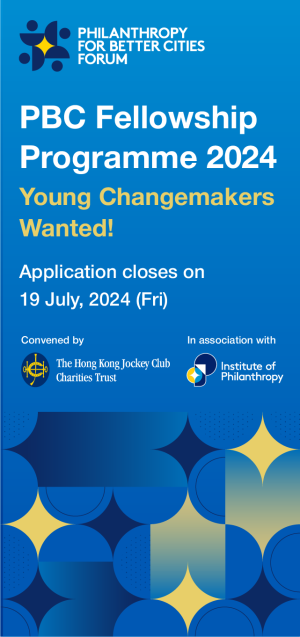Pooled funds are fresh and innovative additions to the UK philanthropic landscape. Examples such as the Civic Power Fund, which is championing grassroots community organising, the Power of Pop Fund, which is growing the pop culture for social justice field, and the UK Democracy Fund, which is increasing electoral participation of underrepresented groups, all offer funders ways to diversify their funding, achieve strategic change through collaboration and shift power directly into the hands of the communities they want to support.
In order to understand more about this growing philanthropic trend, we were commissioned by the Joseph Rowntree Foundation to produce a qualitative research study into the value of pooled funds. Our report, Shifting Power: Exploring the value of pooled funds in the UK funding landscape, reflects on this trend and explores the sorts of questions funders and trustee boards should ask themselves when considering whether to invest in a pooled fund.
A pooled fund sits at the most aligned end of the funder collaboration spectrum. We have defined it as multiple funders contributing money and delegating decision-making authority into a separate entity, the pooled fund, to advance a particular objective or strategy. Pooled funds vary in format and approach and our qualitative research study set out to understand them in more detail.
We uncovered the value of this funding model, which holds the potential to fund in a way that is strategic, equitable and collaborative. But we also found inherent challenges, many linked to inadequate resourcing and reluctance among funders to cede power.
Considering the complex challenges our society is facing, we believe pooled funds are here to stay and encourage funders to engage with this model. To support foundation staff and trustees with this, our report sets out a series of guiding questions to consider when deciding whether to initiate, or invest in, a pooled fund. We recommend using these questions, and the sub-questions listed in the research, as a decision-making tool to help funders work through whether a pooled fund can be an effective model for achieving the change they want to see:
Question 1: Can you solve the issue you are seeking to address by yourself?
In some cases, funders are well placed to fund directly. Perhaps there will be a niche to fill or a specialism that a funder has honed over many years and staff and trustees will have developed exceptional competence in a particular issue area or change methodology.
But in other instances, a funder might acknowledge that the strategic challenges it wants to address are complex, intersectional, deep-rooted, structural and will require long-term, concerted, collaborative focus. In these instances, a collective response that can take riskier bets, trial innovative new methods and invest in thought leadership and shared learning may lead to greater impact. It may also raise additional funding towards the cause and bring significant leverage to what a single funder can achieve on its own.
Question 2: Is a pooled fund the right vehicle?
If collaboration is the right answer to question 1, it doesn’t mean a pooled fund is necessarily the best approach. In some cases, a looser collaboration or aligned funding model could be a more straightforward and cost-effective alternative.
We heard anecdotally during our research that pooled funds work well in the following areas (although it is not an exhaustive list): a coordinated emergency response, a specific well-defined strategic change, sharing learning and/or risk in a new area, and where a concerted power shift is needed (such as through the Baobab Foundation, which is resourcing racial justice through Black and global majority communities, for example).
Question 3: Is this the right pooled fund?
If pooled funding is the answer, the key question then becomes: what is the right pooled fund? We ask this because the right host, set up and leadership of a pooled fund are paramount for its success. We acknowledge that it is too simplistic to say that a pooled fund is an inherently ‘good’ or ‘bad’ model. Too much will depend on the fund itself, its guiding purpose and its context. In order to capture when a pooled fund works well, we produced a visual tool to draw out the key ingredients that make a pooled fund particularly helpful.
Question 4: Are you ready to shift power to a pooled fund?
This is, perhaps, the most important question of all. In speaking to funders, intermediaries and grantees (of both non-pooled and pooled funds) we unearthed plentiful enthusiasm for pooled fund models. But we also heard that there is too often reticence about investing in these vehicles, particularly from trustee boards, who can be wary about transferring funds into a pool, where this also involves passing on the power to make funding decisions.
We urge funders and trustee boards to work through the risk of letting go of some of their power, balanced with the potential for wider impact that pooled funding models hold. In particular, we ask trustees to consider: what elements of your approach and decision-making processes are you willing to let go of or compromise on?
Question 5: Can you maintain the commitment in the long-term?
Pooled funds are caught in the middle, acting as both grant seekers and grant givers. This brings a closeness to the field, a unique perspective and understanding of what it means to be seeking funding in a challenging environment. But it also means pooled funds experience the same precarities of other grantees in being able to set long-term strategies, employ staff and provide stability to the sector they are seeking to sustain.
This underlines the vital need for pooled funds to be resourced for the long term, and funders deciding whether to invest in a pooled fund need to consider if they are ready for this. Taking a punt on a pooled fund, only to withdraw shortly after, could topple the whole endeavour. Trustees and funder power brokers need to be exceptionally mindful of this when taking the plunge into a pooled fund.
Overall, we are enthusiastic about the value and potential of pooled fund models. We see the opportunities for thought leadership, innovative funding practices, shifting power and closeness to the work as holding exceptional merit—and as something the funding sector urgently needs. However, we do acknowledge the inherent challenges in the model, which in order to go mainstream will require a mindset shift and reckoning around power from many more funders.
In the words of one of our interviewees: ‘In the future we need to have a series of really strong, thriving intermediary funds with a clear and robust vision that are actually resourced for the long-term to do this work. This would shift more social justice spending into a way that genuinely reflects the wants and needs of communities and would provide more opportunities for them to have their work celebrated and championed.’
Lena Baumgartner is a freelance consultant and researcher with a focus on philanthropy and effective grant-making.
Alice Sachrajda works as a cultural strategy consultant, specialising in creative research, narratives and strategic communications.






Comments (0)